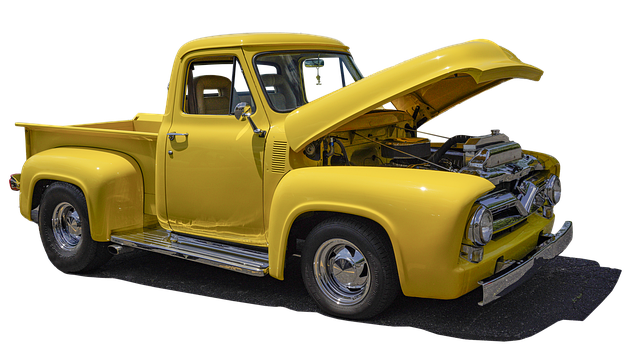Looking to register your car in California? This guide breaks down the process step-by-step, ensuring you meet all state requirements. From gathering essential documents like proof of insurance and ownership to verifying your vehicle’s Identification Number (VIN) using a reliable DMV VIN verifier, we cover it all. Whether you prefer visiting a local DMV office or completing the process online, this article provides clear instructions for a smooth car registration experience in California.
- Understand the Requirements for Car Registration in California
- Gather Necessary Documents for Car Registration
- Visit a California DMV Office or Use the Online System
- Complete the Car Registration Process: Step-by-Step Guide
- Verify Your Vehicle's Identification Number (VIN) with DMV
Understand the Requirements for Car Registration in California

Before registering your car in California, it’s crucial to understand the requirements set by the Department of Motor Vehicles (DMV). To begin with, most vehicles, regardless of age, need to undergo a vehicle safety and emissions inspection. This is typically done using a DMV Vin verifier, which checks for any outstanding issues related to safety and pollution control. Additionally, you’ll need proof of insurance, a completed application form, and the appropriate fees.
For those considering a mobile vin inspection or using a mobile vin verifier, it’s important to know that these services can streamline the process. They allow you to verify your vehicle’s history and identify potential issues from the comfort of your home or office. However, traditional methods remain effective, ensuring compliance with California’s car registration standards.
Gather Necessary Documents for Car Registration

Before heading to the California DMV for car registration, ensure you gather all the necessary documents. This includes your vehicle’s Registration Application (Form DV267), which can be obtained online or in person from the DMV. Additionally, you’ll need proof of identification such as a valid driver’s license or state-issued ID card, and proof of insurance. The Vehicle Identification Number (VIN) is another crucial piece of information; for accuracy, consider using a mobile VIN verifier to ensure your car’s details match the one on record.
It’s also recommended to bring along any relevant maintenance records or repair receipts as these can streamline the registration process. For instance, if you’ve recently had a mobile VIN inspection or verification done, these reports could be useful. Remember, having all the required documents ready not only saves time but also helps prevent potential delays in registering your vehicle.
Visit a California DMV Office or Use the Online System

Registering a car in California involves either visiting a local DMV office or utilizing their online system, both offering efficient pathways to secure your vehicle’s registration. If you prefer a more traditional approach, heading down to your nearest California Department of Motor Vehicles (DMV) office is an option. Here, you can complete the registration process in person with the assistance of knowledgeable staff. Alternatively, California’s DMV offers a convenient online system where you can register your car remotely. This digital platform streamlines the process, allowing you to upload necessary documents and photographs, and even pay fees electronically.
For those seeking convenience, a mobile vin inspection or verification service could be an excellent choice. These services provide a similar functionality as the online system but with the added benefit of having a professional conduct a thorough vehicle inspection, ensuring your car meets all required standards before registration. Utilizing these options ensures a smoother, more efficient registration experience tailored to modern lifestyles.
Complete the Car Registration Process: Step-by-Step Guide

Completing the car registration process is a straightforward procedure when you follow these simple steps. First, gather all necessary documents, including your vehicle’s registration papers, proof of insurance, and valid driver’s license. Then, visit your local California Department of Motor Vehicles (DMV) office or utilize their online services to initiate the registration.
Next, enter your Vehicle Identification Number (VIN) using the official DMV vin verifier tool. This step is crucial as it ensures the vehicle’s history and authenticity. If you prefer a more convenient approach, consider using mobile vin inspection or mobile vin verification services, which allow you to complete this process from the comfort of your home. Once your VIN is verified, input the required details, such as ownership information and vehicle specifications. Finally, pay the registration fee, and your car will be officially registered in California.
Verify Your Vehicle's Identification Number (VIN) with DMV

Before registering your car in California, it’s crucial to verify your vehicle’s Identification Number (VIN) with the DMV using a reliable method, such as a mobile VIN verifier or by performing a VIN inspection yourself. This step ensures that your vehicle’s information is accurate and matches the records of the Department of Motor Vehicles (DMV). A simple online search or a quick scan through a reputable mobile VIN verifier app can help confirm the VIN details, including the make, model, year, and even the historical ownership records.
Having an up-to-date and accurate VIN is essential for a seamless registration process. If you’re considering a used car, it’s particularly important to verify its history through a VIN inspection. This can protect you from potential issues or fraud by ensuring that the vehicle hasn’t been reported as stolen or had major accidents in the past. Many mobile vin verifiers provide instant access to detailed reports, making this process efficient and convenient for California residents.
Registering a car in California involves understanding specific requirements and gathering essential documents. By following the step-by-step guide, which includes verifying your vehicle’s Identification Number (VIN) with the DMV or using a dmv VIN verifier, you can ensure a smooth process. Whether visiting a local DMV office or using the online system, you’ll be on your way to legalizing your vehicle in no time.
